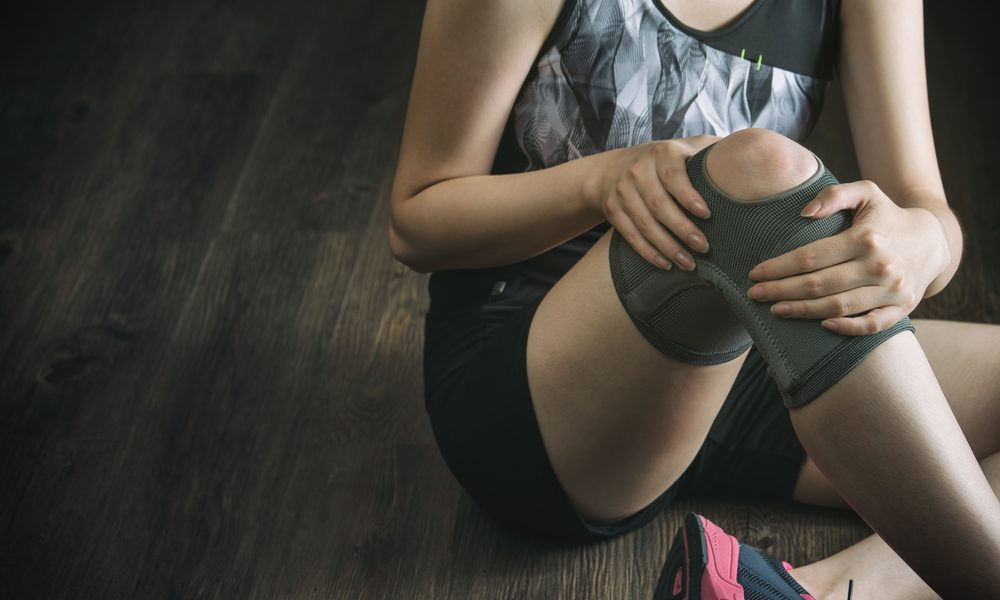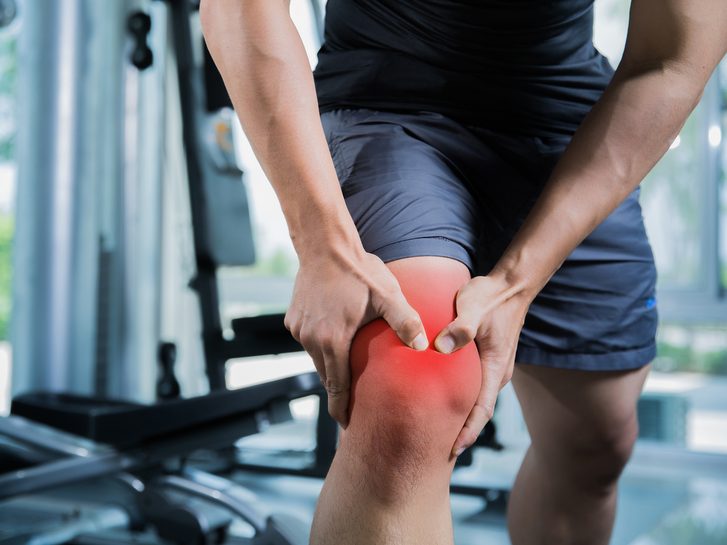
Could This Be the Culprit Behind Your Swollen Knee? Here’s What to Do About It

The knee is the largest joint in your body, which means it is the most susceptible to injuries and swelling that can be caused by a number of factors. The medical term for knee swelling is edema, and its most common symptom is severe pain that can make walking difficult, or worse, impossible.
The condition also affects the knee’s function and flexibility, hampering your daily activities, which can be irritating to say the least. So how do you address this? Before you poke your ballooning joint with a needle, it is best to understand the cause behind the problem.
Arthritis
Arthritis is basically an all-encompassing term for any inflammation of the joint. This is most common in the knee and has two kinds: osteoarthritis and rheumatoid arthritis.
In the latter, the immune system targets the joint and destroys the bones and tissues whereas the former, which is the more common, the cartilage, or the protective cap, of a joint wears away with time, the American Academy of Orthopaedic Surgeons said.
If you have this, you may feel stiff, swollen, or painful joints. Arthritis is also likely to develop as you age, which makes it even harder to move. According to MayoClinic, treatment varies on which type you have, but basically the aim is to reduce the symptoms for an improved quality of life.
Injuries

lzf/Shutterstock
Swelling of the knee as a result of an injury may be normal
That swollen knee may be a result of an injury – think hard, did you hurt yourself during your workout or perhaps bumped into a table? Believe it or not, the inflammation is just your body’s normal reaction to trauma and according to The Mount Sinai Health System chief of sports medicine James Gladstone, it is prevalent among younger patients.
As a result of the injury, the affected area gets an increased blood flow, prompting a rush of proteins, fluids, and white blood cells that begin the healing process – this explains why the spot becomes red and swollen the day after.
Gout or False Gout
Gout is a type of arthritis that develops when there are high levels of uric acid, a naturally occurring chemical in the body, that is a byproduct of purine breakdown, which result in the buildup of urate crystals in the joint.

TORWAISTUDIO/Shutterstock
Gout may wake you up in the middle of the night with excruciating pain in the knee
People who have this know how painful it is and how hard it is to go on with everyday activities with gout. This often occurs at the base of the big toe, but it can affect the knees, wrists, and other joints in the body.
Easy Orthopedics CEO Dan Paull explained that this usually occurs in extremities like hands, feet, and joints because of the cooler temperature these are exposed to which leads to the formation of crystals.
Calcium pyrophosphate dihydrate deposition or better known as pseudogout is also a type of arthritis but this one mostly affects the knees and wrists. The condition usually occurs when calcium crystals accumulate in the cartilage leading to fluid retention in the joints, which, like gout, brings about intense pain and swelling.
Lyme Disease

Ovidiu Hrubaru/Shutterstock
Bella Hadid has lyme disease which could be a culprit behind swollen knee
One reason to have your knee pain checked is that it could be a manifestation of a prolonged and untreated Lyme disease, which comes from a tick bite. Dr. James explained that whenever he couldn’t see a plausible cause for the swelling, he considers this the bacterial infection.
The Centers for Disease Control and Prevention said that knees are particularly prone to pain, arthritis, and inflammation that’s related to severe Lyme disease.
More in Health & Well-being
-
`
Here’s Everything You Need to Know About Open Relationships
An open relationship is a consensual arrangement where partners agree to engage in romantic or sexual relationships with other people. Unlike...
June 6, 2024 -
`
Explore the Multifaceted Goals of Meditation
What is the goal of meditation? If you have ever found yourself asking this question, you are not alone. Meditation has...
May 31, 2024 -
`
When is National I Love You Day Celebrated? Mark Your Calendar
Life can get hectic, and sometimes amidst the daily grind, we forget to express our love and appreciation for the phenomenal...
May 23, 2024 -
`
When’s the Best Time of Day to Fish?
For any angler, a successful fishing trip hinges on several factors. But one of the most crucial elements is timing. Knowing...
May 14, 2024 -
`
What Mental Illness Does Britney Spears Have? Discovering the Answer
Britney Spears, a name that resonates with millions around the globe, goes far beyond the glitz and glamour of her stardom....
May 7, 2024 -
`
Here Are Some Easy Ways To Say No To Unrealistic Expectations In Your Relationship
If you are in a relationship, you should constantly work on improving it. Some early lovebirds fall in love too quickly...
May 3, 2024 -
`
Therapy? Medication? What Are the Treatments for PTSD
Post-Traumatic Stress Disorder (PTSD) is a common after-effect of traumatic events. It can be a debilitating condition, but the good news...
April 25, 2024 -
`
Courting vs Dating – Which Relationship Path is Right for You?
In today’s fast-paced world, the terms ‘courting’ and ‘dating’ often swirl around in conversations about relationships. While some people may use...
April 23, 2024 -
`
Essential Mexico Travel Tips for a Seamless Adventure
Mexico, a land of vibrant culture, breathtaking landscapes, and mouthwatering cuisine, beckons travelers from across the globe. But before you embark...
April 16, 2024















You must be logged in to post a comment Login